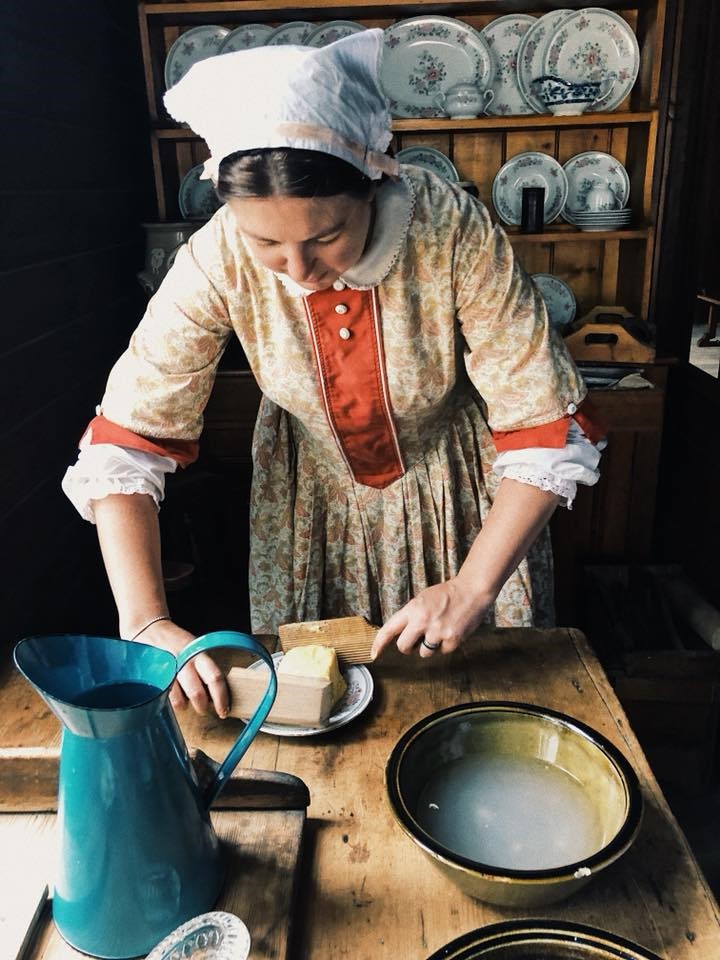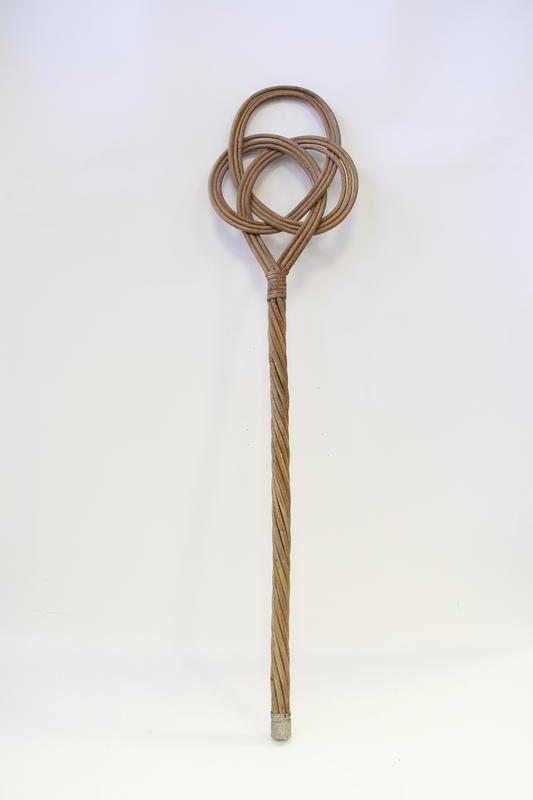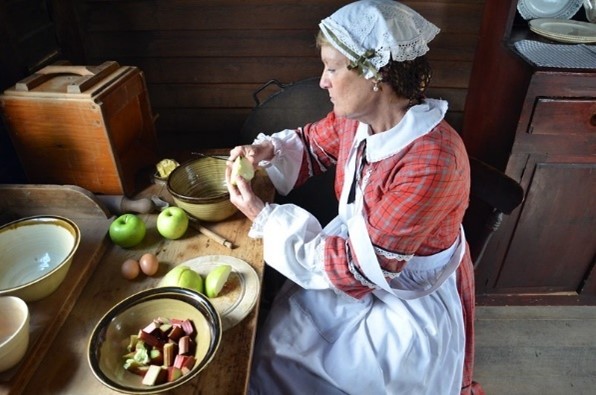People in the 1850s on the goldfields in Ballarat remained physically active differently to today. Today, people count their steps and go to the gym to keep active. School children keep active by playing sport and have Physical Education classes at school. In the past, mid-19th Century people had a very different lifestyle. Home duties and tasks to be completed around the home were unpaid work, and mostly completed by the women and older children in the household. Home duties were arduous and what was often considered ‘women’s work’, they required strength and resilience, especially when the 1850s household duties required hours upon hours of manual labour. Forward to today and groups in society are still calling for pay parity and equal opportunities.
Today, accessing clean noncontaminated hot and cold water in our home is as simple as turning on a tap. In the 1850s, if you weren’t wealthy, there were no taps in your house and no plumbed water. Most often children would have to collect the water with buckets, from the nearest water source. For many families, this could be downhill and a distance from your house. During the winter months collecting water closer to your home may have been easier with the seasonal rain, however, accessing water in the summer dry months, would have been physically exhausting. Collecting water would mean having to walk heavy buckets filled with water to your house.
Think about everything you need and use water for in your daily life – drinking, bathing, brushing your teeth, washing clothes, watering the plants, and cooking. Even the simple task today of washing the laundry would be physically demanding. The current average washing machine (7.5 Kg) uses about 64 litres to do one wash. Imagine now if you had to bring all that water up from the creek before you could start the washing. It could take up to 189 litres or 17 buckets to do a load of laundry in the 1850s. Washing clothes in the mid-1800s was hard and laborious work. It wasn’t as simple as placing laundry into a washing machine and placing the laundry on the washing line to dry. Instead, it was a time-consuming and tiring process. The laundry would first be soaked in tubs of water overnight. The next day, the laundry would be soaped, boiled, or scalded, rinsed, wrung out, mangled, dried, starched, and ironed, often with steps repeating throughout. This could have been done up to three times. Laundry would be scrubbed up and down on a washboard, by hand.
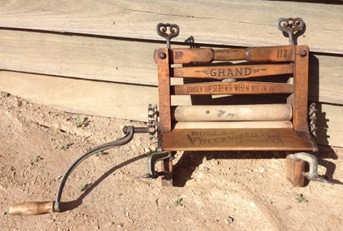
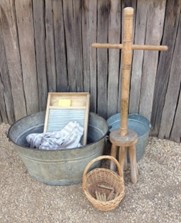
Laundry was sometimes dollied (this would mean using a wooden dolly that you would turn by hand – pictured above right) for 45-60 minutes (this is like the oscillation or turning process your washing machine does today). The wringing of laundry (getting rid of excess water out of material) was sometimes done first by hand and then squeezed through a machine called a mangle (pictured above left). The mangle required each piece of washed laundry to be squeezed or wrung through, piece by piece, it was also hard to turn, manually by hand. This would have caused a lot of sore arms! The wet laundry could be put through the mangle up to four times (the final fourth time would be before it would be hung out on the washing line outside, to dry).
At home in the 1850s, ironing traditional fabrics without electricity was also a hot, arduous job. Irons had to be kept immaculately clean and polished. Irons in this era did not have temperature controls like they do today, constant care was needed not to scorch material. The iron, depending on which one you were using, could weigh between 2 and 6 kilos requiring a lot of heavy lifting.
Keeping the floors of a home clean in the 1850s was another task that was physically requiring muscle power. Today in our homes we have automatic vacuum cleaners that can be programmed to go around the home via a mobile phone app. However, in the mid-19th Century, sweeping floors, and beating rugs, and carpets would be done by the women of the household. In the 1850’s not everybody could afford expensive rugs, so many would make their own rugs out of scrap pieces of material (called rag rugs). Even a small rag rug would keep your feet warm getting out of bed on a cold morning! If people were fortunate enough to own rugs, cleaning such carpets or rugs was no easy task. To clean the rug/carpet you would take the rug outside, hang it over a fence, and then beat it with a carpet/rug beater (a handle and large flat paddle, usually made of cane-shaped in a knot). This was sometimes done twice a day.
A lot of physical work was required in the 1850s to make daily food. There were no takeaway meals and no microwaves in the mid-19th Century. For some, there would be a local shop nearby that would provide essential staples (e.g. flour, sugar), but there were no supermarkets or mass pre-packaged food items for convenience, like today. The food was not pre-packaged and there were no refrigerators, as we know them today. Therefore eating seasonal produce was essential. Women of the household, to ensure there was enough food and variety in their family’s diet would pickle foods such as tomatoes, piccalilli, and chutney. To make a preserve could take 3 hours over the stove. These preserves could be kept for months (no use by dates or best before in the 1850’s).
Other domestic physical work that had to be done daily would have included feeding animals and looking after them (chickens for eggs and cows for milking). One labor-intensive home duty could include making the family’s butter. Butter could be purchased from the store; however, many families saw this as expensive and would make their own. The process involved milking the family’s cow and allowing the milk to stand on its own overnight until the cream rises to the top. The next step would be to skim the cream off the top, place it into the butter churner, and turn it by hand. This would take approximately around 20 minutes of vigorous turning to turn into butter. Not to be forgotten household work by women and children would be foraging nearby areas for extra food, cleaning the house, garden maintenance, and emptying the chamber pot (toilet).
Interesting fact – Midway through the 19th century, Dr. John Snow discovered that cholera was being transmitted through unclean water. However, putting chlorine in the drinking water, so drinking water would become safe to drink, would only begin in the early 1900’s.

